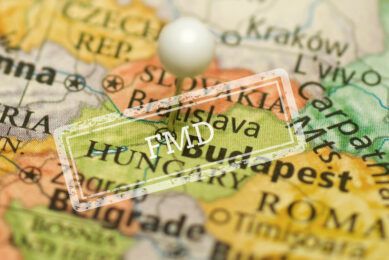Promising future seen for developing world

The demand for dairy has grown dramatically over the last ten years and further growth is foreseen, especially in Asia, Africa and the Middle East. Besides these emerging markets trends like demographics, urbanisation and favouring dairy products in nutrition programs will influence these patterns and put pressure on production and R&D.
Demand will soon outstrip supply, according to experts. The demand for dairy products in the developing world will be three times greater than in the developed world, meaning that 95% of future growth will come from emerging markets. Nicola Shadboldt, director of Fonterra, puts it this way: “We need to not only be producing more on a worldwide scale, but utilising a localised approach in a global world.”
These patterns are reflected in the World Dairy Situation report of the International Dairy Federation. On the consumption part, there is a strong increase over the past six years in South America (+26%), Africa (+22%) and Asia (+13%), while the demand in Europe declined. “Increasing GDP and strong population growth in these regions has resulted in a surge in demand for dairy in the developing world,” editor Adriaan Krijger of the report explains.
Yet the growth in some parts of the world can sometimes be misunderstood due to limited data. Africa as a whole doesn’t really reflect the main trends, for example. When looking at the GDP growth, Ghana, Mozambique, Ethiopia, Nigeria and the Democratic Republic of the Congo are star performers, while the top dairy producers on the continent are Sudan, Kenya, Egypt, South Africa and Tanzania. Apart from Kenya and South Africa, the biggest milk producers on the continent, there is a trade deficit for milk, as large as 84%, in Africa. Most African countries rely on dairy imports to provide their national needs.
As the correlation between income per capita and dairy product consumption is inevitable, as clearly shown in the BRICS countries, the room for growth in Africa is almost unbelievable. Especially as the consumption of dairy foods per capita per year in Africa currently stands at 49 kg, not even half of the world average of 104 kg. Also in Asia and other emerging nations the rising demand for dairy products will be met by small-scale farmers. India is a good example: it is the biggest milk producer in the world without trade surplus or deficit, thanks to millions of small-scale farmers. This reflects another trend in world dairy farming: where the number of farms in the US and Europe is shrinking and the herds per farm are growing fast, in India and some African counterparts millions of farmers are milking only two or three cows. Around one billion people are provided with a livelihood from the approximately 145 million farms worldwide which have just two or three cows. Farms with ten cows or less comprise as much as 78% of the world’s farms. India will have to meet the demand by increasing production of those millions of farmers. It is the same for Africa, where most small-scale dairy farmers are involved in mixed agricultural activities such as growing crops.
A large number of people are involved in milk production: the FAO says it is not uncommon to have 77 people involved in the production of 1,000 litres of milk. Then marketing, transport and distribution also involves a lot of people and provide in this way labour opportunities and income sources.
That’s why Kipkirui Arap Lang’at, chairman of the Eastern and Southern Africa Dairy Association (ESADA), calls dairy as one of the most important agricultural sectors in sub-Saharan Africa, with a huge potential for alleviating poverty and improving food security and nutrition. He points out, however, that productivity in Africa is very low, with some countries recording 174 kg a year per cow, compared to 12,000 kg per cow per year in a few countries. There is room for development, given the current consumption rates and the pattern of African households gaining spending power and shifting to dairy products. Lang’at: “Food and beverage consumption is predicted to increase more in absolute value terms than any other category over the next decade, rising by US$175 billion to reach US$544 billion in 2020.”
Join 13,000+ subscribers
Subscribe to our newsletter to stay updated about all the need-to-know content in the dairy sector, two times a week.










